Although an autumn passed through and a winter comes around, season of reading has still continued. Despite people do not spend reading books enough in these days, people have tried to read through literatures, which still remains in various forms. In this issue, The UOS Times looked for some bestsellers of the past and the present in Korea. Also, this story tackles some phenomena of reading books in the University of Seoul (UOS) students by analyzing survey questionnaires. Besides, The UOS Times will cover introductions of UOS reading recommendation programs, the places to read a book, and several movies originated by books.

Bestsellers have more meanings than simply salable books. It means many people have enjoyed reading these books. In other words, these bestsellers empathized readers and reflected on their thought in that period. There were some characteristics in each decade and these mainly accord atmospheres of society in those days.
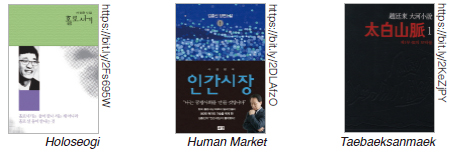

A main characteristic of the 1980s was a development of both quality of contents and quantity of the number of books and genres of publications. In the 1980s, book genres of novels, poetry, essays, humanities, and social sciences were on the bestseller list, which led to a revolutionary improvement of reading culture.
At first of looking through the bestsellers, many books of poetry became bestsellers. It could not say too for this era to become a “period of exuberating on poetry.” A love and friendship were emphasized in that books. For example, Holoseogi (Standing Alone, in English) by Seo Jeong-yoon, and Jubsikkot Geudae (You My Rose Mellow, in English) by Do Jong-hwan were representative books in that period. Next, the first million-seller in Korea is Human Market by Kim Hong-shin, in novel genre. The main character named Jang Chong-chan resembled with Hong Gil-dong, who are famous for Korean fighting against enemies related to irrationality of society. In those days, readers could emphasize this kind of story because most Koreas who lived in the 1980s lived a weary life, due to widening the gap between the rich and poor. In addition, there were various of novel genres; such as history novels and social novels. For instance, Taebaeksanmaek (Taebaek Mountain Range, in English) written by Jo Jung-rae was famous for history novels and Children of Darkness, by Hwang Suk-young, was also bestsellers dealt with society in the 1980s.

During this period, the themes and authors of bestsellers were diversified. Among the best sellers, the proportion of non-fiction increased. Particularly, books criticizing paradigms of nationalism became bestsellers. It was because many readers and authors wanted to look back on our history and Korea grew into globalized and digitized society. Especially with the unstable period of the International Monetary Fund (IMF) foreign exchange crisis, the books that covered to look back on the families also gained popularity. Father by Kim Jung-hyun was representative bestsellers of the 1990s. It described fathers who lost place into both the family and society. Due to this contents, a million books were sold within six months after being published.

Then, many readers raise questions for what the bestseller nowadays is. So, The UOS Times introduces bestsellers of the first half in 2018, ranked first to fifth.
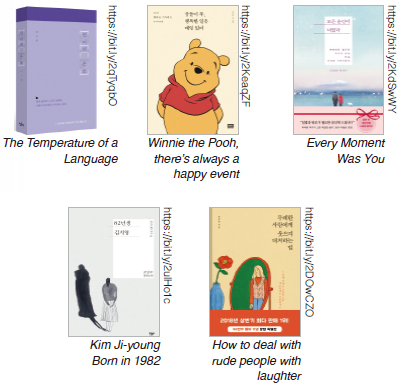
The fifth place: The Temperature of a Language by Lee Gi-ju
The author was a former journalist and he thinks that language has its own temperature. This book captures the significance and urgency of the language, the meaningful words that found in everyday life, and the origin of the words.
The fourth place: Winnie the Pooh, there’s always a happy event
Winnie the Pooh is the friendly characters of Korean readers from the 1990s to the early 2000s who watched Disney animations. Nowadays, the children of those days have grown up and there are some quotes of Winnie the Pooh about life. Remembering and meeting Pooh remind readers hope and meaning of happiness once again. This book gives sympathy and comfort to readers.
The third place: Every Moment Was You by Ha Tae-wan
With the spread of smartphones, social media becomes popular and influenced the consumption of cultural art products greatly. In this trend, literature dealt with culture and social media is booming. It draws readers’ sympathy through simple sentences and emotional contents. The author of this book also gained huge popularity by posting wordings and writings about love, youth, and life on social media.
The second place: Kim Ji-young Born in 1982 by Cho Nam-ju
This book deals life of Korean women. The keywords of this book are sexual discrimination, gender inequality, and feminism. It was an annual bestseller of last year and still gains popularity in this year. It is because women who were blocked by invisible barriers began to speak through the “Me Too” movement, one of the hottest issues in this year.
The first place: How to deal with rude people with laughter by Jung Moon-jung
The purpose of this book is to criticize someone who suddenly behaves rude. This book says that readers can meet rude people every day in their life, and the author think of these kinds of people who ignore a psychological distance as rude people.
When looking at the best-selling books above, female readers were very influential. Nearly 80 percent of female readers bought these books which were ranked as first and second. In addition, the lessons and the words of consolation from the famous characters in comics moved twenties and thirties. Especially, passages and illustrations from the books were actively shared on social media. To sum up, although people have lived in busy life due to economic difficulties and social issues, they have been increasingly attracted to books to build their own living power and to console themselves.

In Part 1, this story covered the bestsellers in Korea. Then, are UOS students attracted to books and how much do they spend reading books? The UOS Times conducted a survey over the Internet to look into patterns and current situation of reading books of the UOS students.


In response to the question about main activities during their free time, they mostly do “surfing the internet” and “listening to music.” This question was designed for students to choose more than one choice. Each of them formed a half of the answers. This shows that many of students use their smartphones while they spend leisure time. The following answer took 34 percent, which was “watching videos including movies and television series.” “Reading books” was selected by 18 percent of students, while “reading news articles” took 17 percent. The last one was “playing mobile games,” which took 13 percent. To sum up, UOS students mainly surf the Internet, listen to music and watch videos on smartphones. Thus, improving the accessibility of reading books could be one of the ways to encourage reading.


When asked about the average reading time during a week, 48 percent of respondents said that they read books for less than 30 minutes. This shows that reading books could not make many students to concentrate more than half an hour. Next, 19 percent of respondents said that they read books for more than 30 minutes and less than an hour. Also, respondents who read books for more than an hour and less than two hours were 17 percent of all respondents. Those who read books for more than two hours and less than three hours were 7 percent of them. Finally, people who read books for more than three hours answered 7 percent, as well.

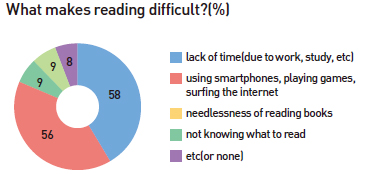
According to the question that asked factors that make reading difficult for students, “lack of time” was recorded the highest percentage, which was 58 percent. This question allowed students to choose more than one. It was followed by 56 percent, which was about using smartphone, surfing the internet and playing games. Also, “absence of reason why they need to read books” accounted 9 percent of all responses.

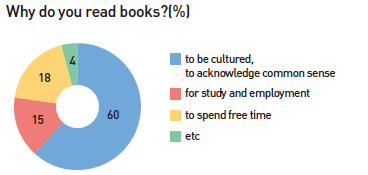
For the question that was about the main reason of reading books, third-fifth of respondents said that they read books to acquire common sense. Almost one-fifth of respondents selected “to spend free time,” while 15 percent of all chose “for study and employment.” This means that many respondents regard reading books as a means of obtaining information, not as a leisure activity.


We also asked to students about the favorite genres of books they read. The question was offered with 14 options of genres to the respondents. This question allowed students to choose more than one. A favorite genre of UOS students was “poetry, general novel and essay,” which responded 52 percent. The second one was “mystery, romance, fantasy, science fiction and martial arts,” which answered 43 percent of respondents. “Political, social, current events” was recorded third as 20 percent, while “economy and business administration”’ took 18 percent. “Philosophy and religion” was preferred by 16 percent of respondents. “Self-help book” was chosen by 14 percent of respondents. The other six options were less than 10 percent of respondents.

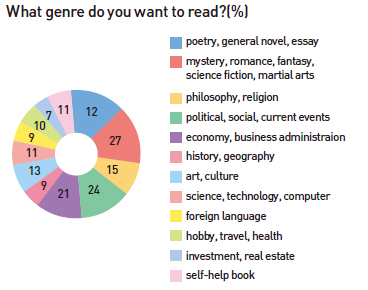
The next question was about the genres that students want to read in the future. This question also allowed students to choose more than one. The most preferred genre was “mystery, romance, fantasy, science fiction and martial arts,” recorded as 27 percent. The second one was “poetry, general novel and essay,” which responded 24 percent respondents. There were more people who want to read “mystery, romance, fantasy, science fiction and martial arts” in the future than people who do want to read in current. “Political, social and current events” and “economy and business administration” formed 24 percent and 21 percent, respectively. One noticeable point is that, 13 percent of respondents chose “art and culture” genre as the genre that they want to read in the future. The percentage of people who chose this genre as the genre that they like to read nowadays was only 1 percent. This shows that most students did not like to read this genre, but some people are somewhat interested in reading books related to this genre. “Science, technology and computer” was preferred to read more in future, rather than in current.

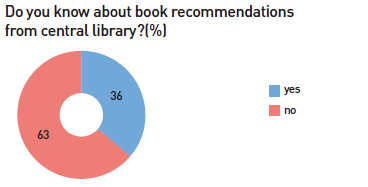
The final question was about an extent to awareness of “book recommendation system” listed by School of Liberal Arts Education of the UOS. Only 36 percent of respondents answered that they knew or had heard about the recommendation system while 63 percent of them said that they did not know about the system. This shows that raising awareness of this book recommendation system could be one of the ways to encourage UOS students to read more books.
As The UOS Times analyzed reading habits of UOS students based on these survey questionnaires, most students spend their leisure on using smartphones, surfing the Internet or listening to music. Also, about a half of respondents concentrated on reading books for less than 30 minutes. The UOS Times understood this result as a lack of accessibility of reading books.
By the way, according to some questions about a reason of reading books or what makes students to read, these answers showed that students are somewhat interested in reading books. This means that the factor that keep students out of reading books was not the book itself. Therefore, in the next part, The UOS Times would like to introduce some ways to encourage reading books by encouraging to read books.


There are some of the books recommended by the Main Library, called “Books that UOS Read.” In this list, a hundred books are categorized into four different fields. Twenty-six books are related to part of “civilization,” 28 books to “phenomenon and thoughts,” 41 books to “society and recognition,” and 5 books to “city and region.” This list also states author, book name, and the reason why they recommended these books shown in each category. Besides, there are some explanations about some of the categories which are introduced in the “Books that UOS Read” that readers can peruse.
First, from the part of “civilization”, there are books about western culture and literature, history, art, science, and science fiction. It explains about life and social structure, historical reflection, modern art, and scientific theory. Then, in part of “phenomenon and thoughts,” there are books about philosophy and economics. From the philosophy, there are lots of philosophers; such as Plato, Aristotle, John Rawls, John Stuart Mill, Friedrich Wilhelm Nietzsche, and Max Weber, explaining about ideological forms. Furthermore, from the economics, there are lots of economic conceptions of modern societies that intellectualize readers to understand about existing principles. Thirdly, in part of “society and recognition,” there are books about poetry, fiction, politics, and nation. In this category, there provides lots of classical literatures on the list to inform readers about books that everyone has heard at least once before. Lastly, in genre of “city and region,” there are books mainly about urban administration. It gives readers academic theory about urban planning and urban policy that indicate in metropolis and small town.

Kkumdure Library
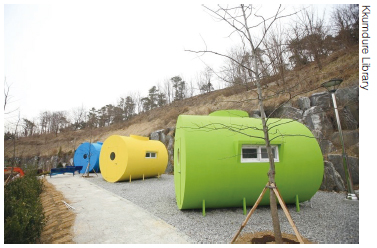
This Library located in Osan city opened on April 12, 2014. Note that Osan city was located on nearby Suwon city. It offers a variety of culture services and nature experience that children and parents can enjoy together. Not only does it give areas with camping, there are also digital library, reading room, lecture room, and cafeteria available for all the citizens to use. The charge is free but whenever a child finishes camping with their parents, each individual has to submit an opinion about the book they have read. By this experience, people can recognize the library as a friendly reading place and children can improve learning ability and sociality through contribution in the read.
Uijeongbu City Library
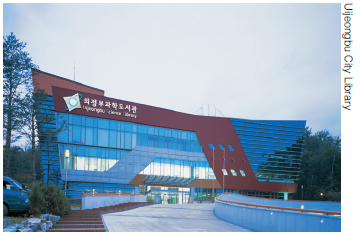
This Library located in Uijeongbu opened on December 2003 and expanded with science library on October 2007. Uijeongbu is located on Northern part of Gyeonggi province and visitors can arrive this library by taking a subway Line 1. It offers astronomy and space observation program for children to experience. Not only does it give programs with science, there also is equipped to a natural science room available for reading of pure science and science technology. Moreover, on the library rooftop, there is a telescope to identify constellations and the surface of the moon. The charge is free with membership in the library and it is open every day except every Friday and national holiday. By this experience, people can recognize the library as a science experience place and children can improve science knowledge by participating in the program.

Dead Poets Society
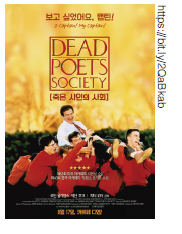
“Carpe Diem!” You might have heard of this Latin expression known as seize the day. This movie was released in 1989 directed by Peter Weir and later published with the book scenario written by N.H Kleinbaum. For the movie description, Todd Anderson and his friends meet a new English professor John Keating at Welton Academy who teaches students of importance of making each moment valuable in their life with poetry class. The boys make the club dead poets society where it is free from the regulations of school and the story follows with the club surviving from the pressure of the authorities. The word, “Carpe Diem” written in the beginning of this book is famous quote from the movie that can be synopsizing in one word. It was awarded with the British Academy of Film and Television Arts (BAFTA) Award for Best Film, 16th Cesar Awards, and David di Donatello Award for Best Film and gained lots of positive appraisal from the audience. It is one of the precedent that the movie has become famous then introduced as a book.
Life of Pi
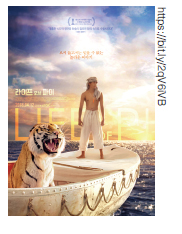
“Life is a story.” After reading the book, its story can be abbreviated into this one sentence. This book was published in 2001 by Yann Martel and later released with a movie in 2012 directed by Ang Lee. For the book description, Pi Patel and bengal tiger named Richard Parker trying to survive 227 days on a lifeboat after shipwreck. Along with the days, not only does tiger take on the lifeboat, but there is also hyena, zebra, and orangutan. The long days from the boat introduces the independent and interdependent of life and that one live via many experiences. At last, conversation between Pi and the investigators of the shipwreck parallels with the two stories, the one with the animal and the other without animals. The story without the animals might seem odd but as you follow the story from the beginning to the end, you will find more provisos. It was awarded with Boeke Prize and Asian Pacific American Award for Literature and the novel has sold more than 10 million worldwide. It is one of the precedent that the book has become famous then introduced as a movie.
The UOS Times covered bestsellers in the past and the present. First by looking at the bestsellers from past, it contained reflection of time and thoughts of people living in the era. Also, survey of reading habits of UOS students implied some issues for reading books; such as some differences of preferred genre between current and the future. Lastly, by looking at the Book Programs, Book Places, and Book Movies, it encouraged different kinds of information that students can gain in the future. Assorting books from past to present, then present to future is not easy. However, The UOS Times hope that readers can enjoy this winter by choosing suitable books for themselves by reading this story.
Shin Ji-hye sophie702@uos.ac.kr
Lee Seo-hyun citynote15@uos.ac.kr
Ji U-yeong uyeong97@uos.ac.kr

